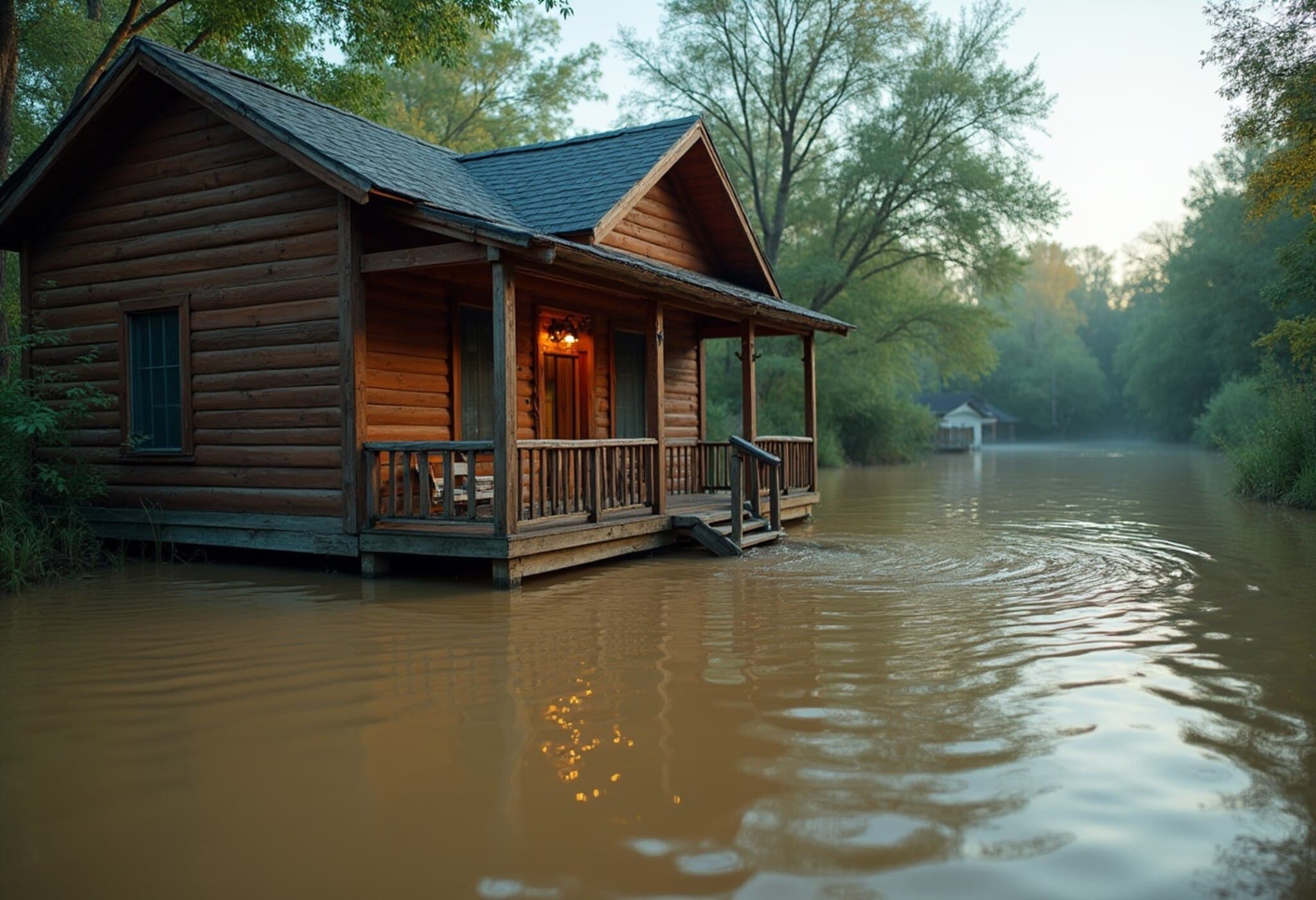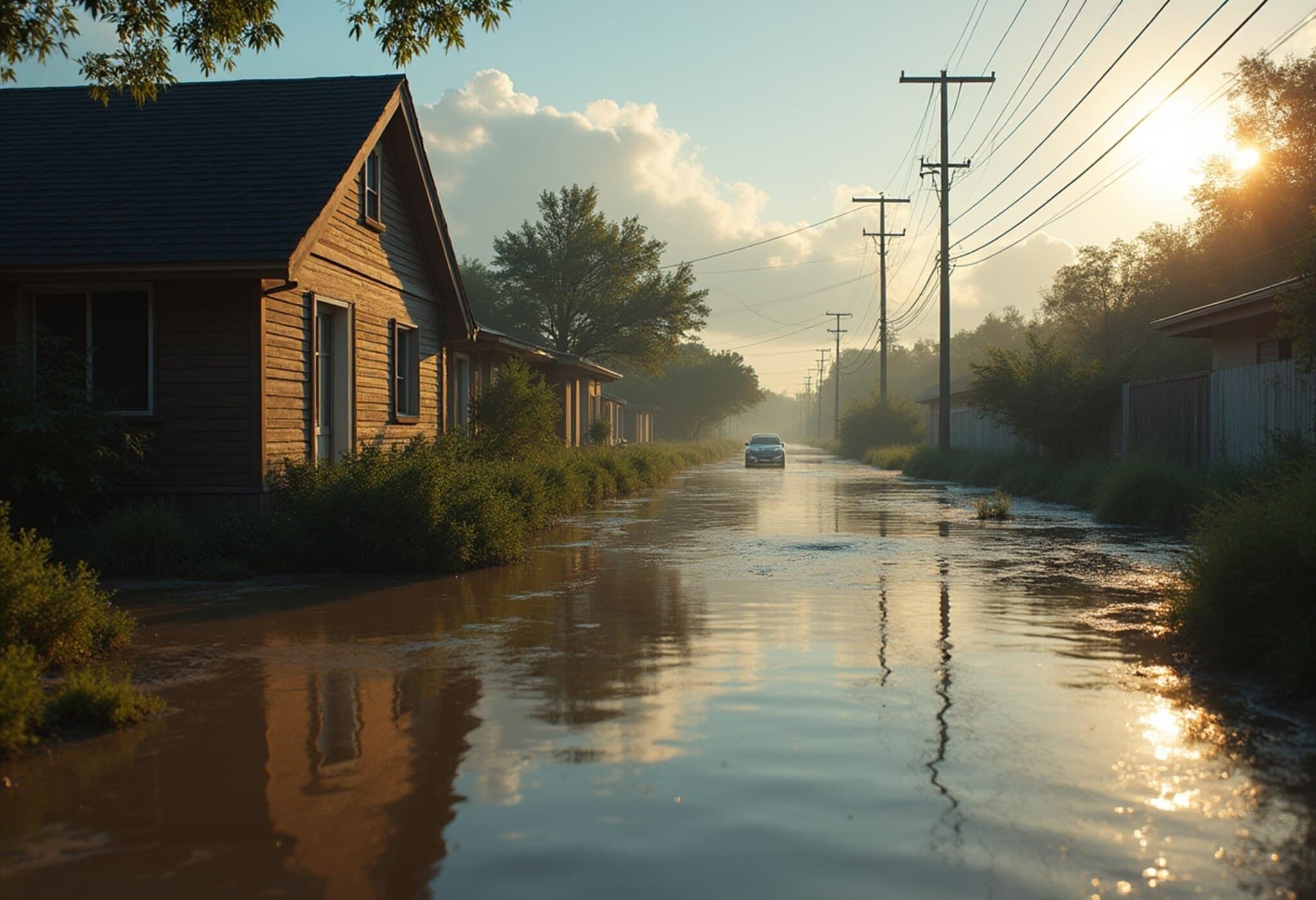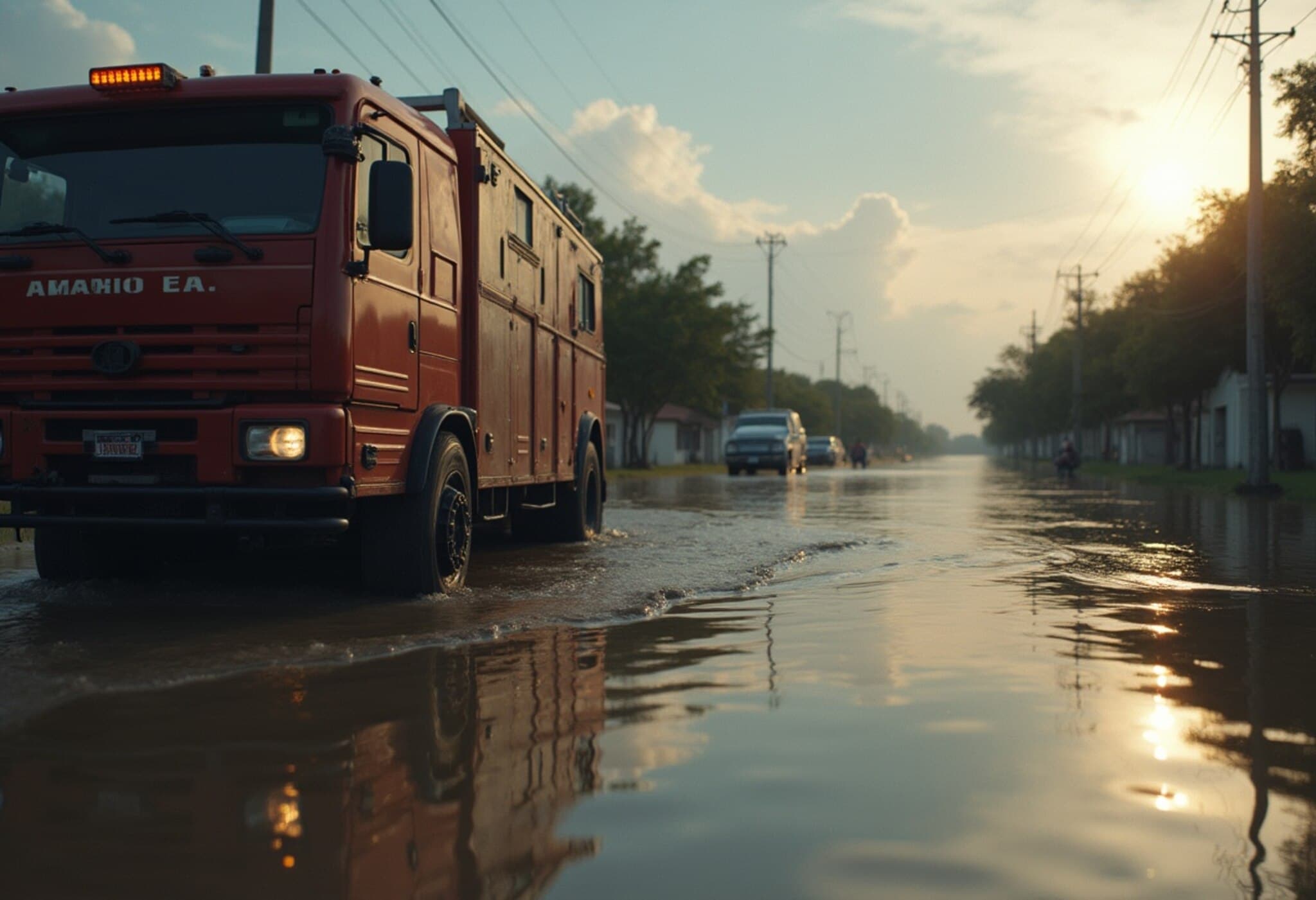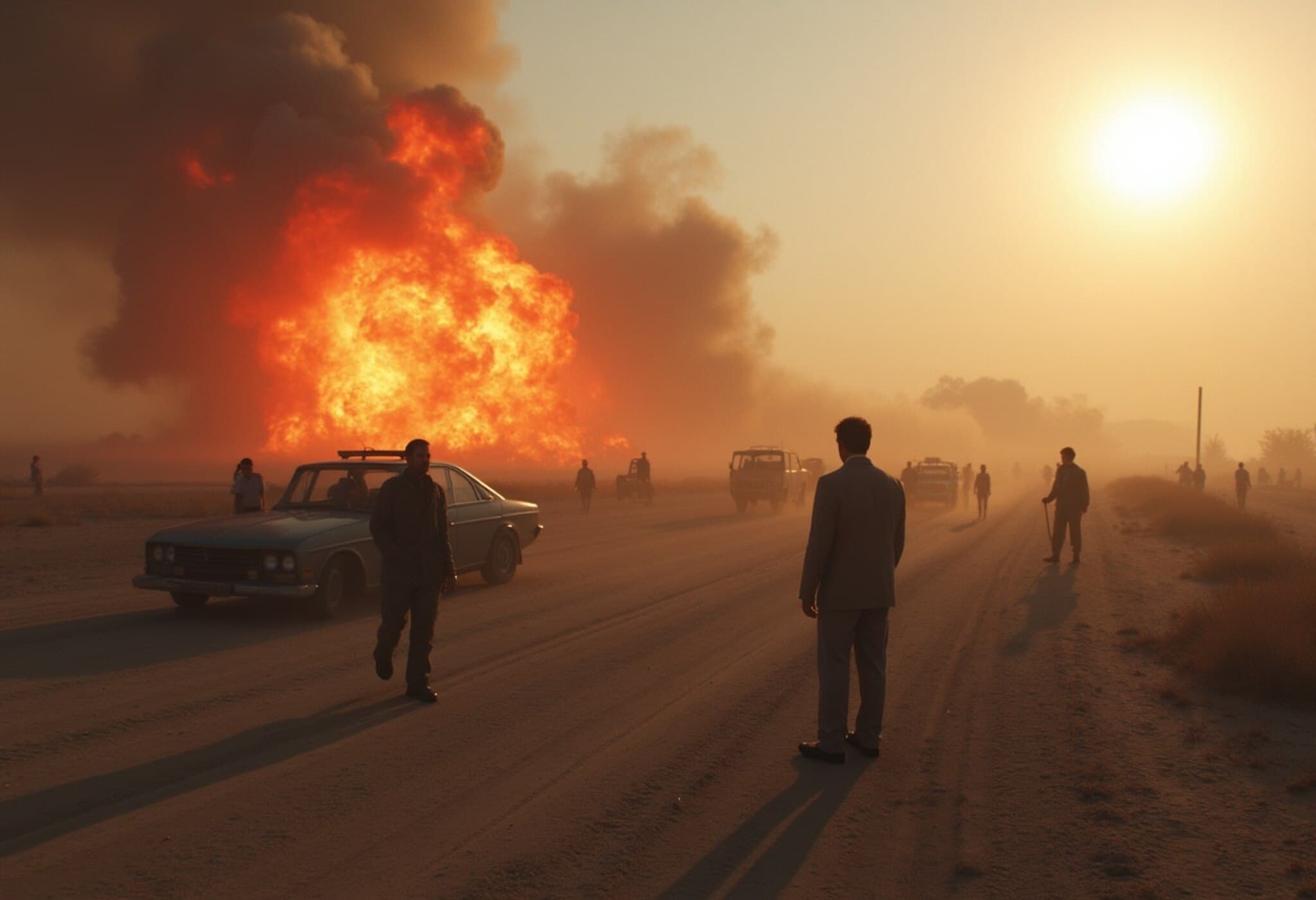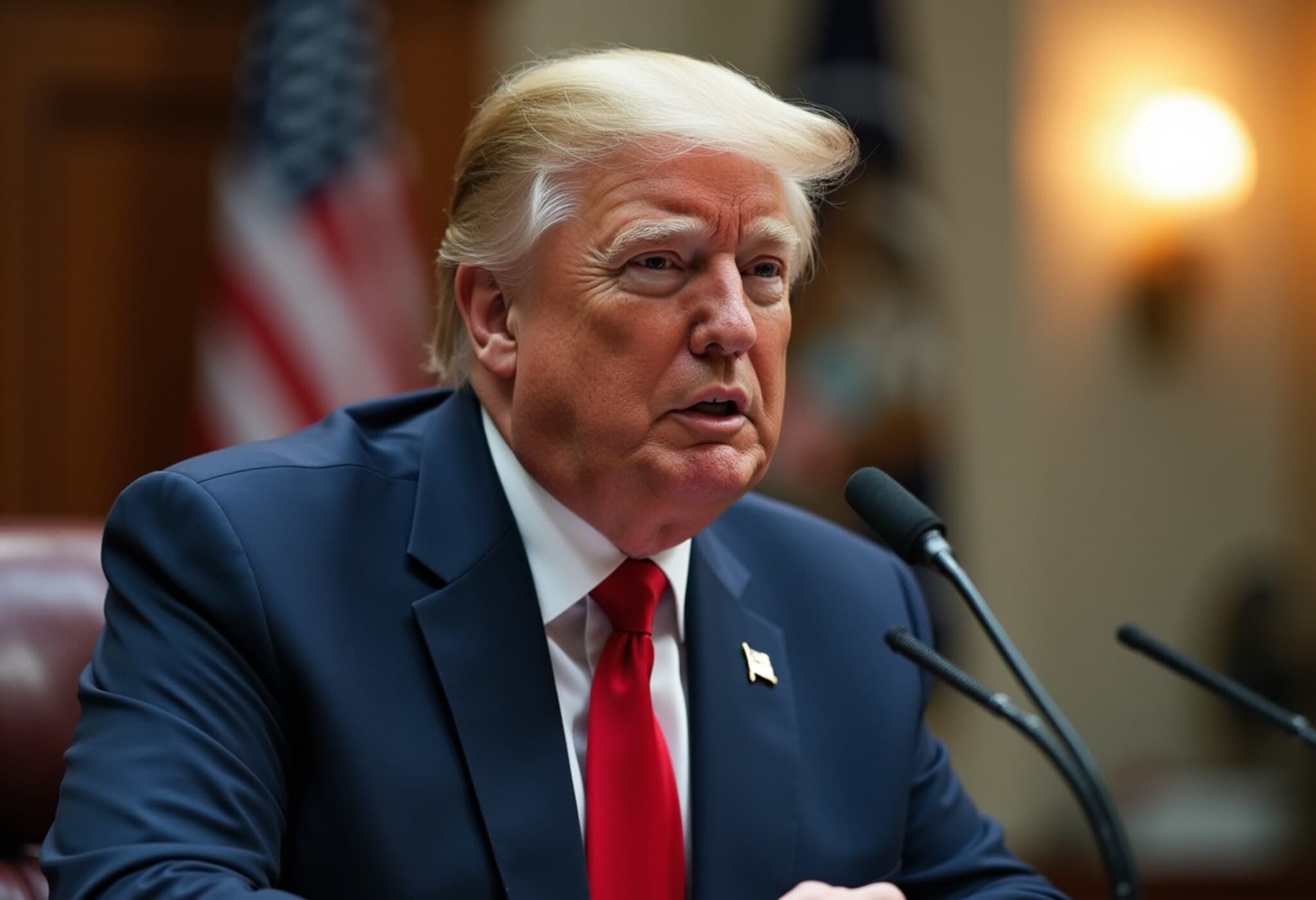Trump Visits Texas Flood Zone and Responds to Criticism
On July 11, 2025, President Donald Trump traveled to Kerr County in Texas’ Hill Country to assess the devastation caused by flash flooding that struck the area on Independence Day. The disaster, which resulted in numerous fatalities and dozens still missing, has sparked intense discussion over the adequacy of flood warnings and government preparedness.
Raw Emotions Surface During Roundtable Discussion
Following his tour of the hardest-hit areas, President Trump held a roundtable with local officials and first responders. He praised Texas Governor Greg Abbott and Homeland Security Secretary Kristi Noem for their response, calling their efforts “incredible” despite the scale of the crisis. Trump described the situation as “a hell of a situation” highlighting the suddenness and severity of the flooding.
However, when questioned by a reporter about why some families felt that warnings had not been disseminated sooner, the president responded sharply: “Only a very evil person would ask a question like that.” This exchange underscored the tension between demands for accountability and the administration’s staunch defense of its disaster response.
Examining Government Preparedness and Response
The flash floods struck with alarming speed in the early hours of July 4, overwhelming communities in what has been dubbed “flash flood alley.” Kerr County and surrounding areas received more than 30 centimeters of rain in under an hour, with the Guadalupe River swelling to nearly 10.5 meters, destroying homes, camps, and infrastructure.
Despite the tragedy, government officials, including the Trump administration, contend that the National Weather Service (NWS) and Federal Emergency Management Agency (FEMA) fulfilled their roles effectively. Yet, critics argue that recent budget cuts to these agencies may have hindered their preparedness and outreach capabilities. Specifically, Kerr County had opted against installing an early-warning system due to financial constraints, highlighting the broader challenges in disaster prevention funding.
Funding Cuts and Political Context
- The Trump administration’s budgetary reductions affected NWS and FEMA staffing and resources.
- President Trump has publicly suggested decentralizing FEMA by shifting responsibilities to state and local governments, a move that has stirred debate regarding the agency’s future.
- Kerr County’s rejection to install early-warning sirens was linked to lack of state funding, leaving residents vulnerable.
The Human Cost: Lives Lost and Communities Shaken
The disaster’s toll is tragic, including at least 36 children who perished at Camp Mystic, an all-girls Christian summer camp located near the riverbanks. Over 160 individuals remain unaccounted for according to Kerr County officials, though experts caution that initial missing persons lists often include duplications in the chaos following disasters.
Longtime local resident Jon Moreno expressed a somber perspective: building communities so close to flood-prone rivers remains an ongoing risk. “It’s unavoidable,” he said, underscoring the intersection of human development and natural hazards.
Political Fallout and Local Sentiments
As debate continues, Governor Abbott has dismissed blame-oriented inquiries, labeling focus on fault as “the word choice of losers.” Yet at local businesses in Kerrville, frustration with federal policies is palpable. Graffiti at a gas station accused the president’s recently signed legislation of cutting emergency funding, pointing to the political tension surrounding resource allocation for disaster response.
Looking Ahead: Legislative and Community Responses
The Texas state legislature is set to convene a special session to investigate the circumstances surrounding the flood, explore early-warning deficiencies, and secure additional disaster relief funding. This legislative response reflects increasing recognition of the need to bolster infrastructure and preparedness in high-risk areas.
Expert Insight: Navigating Disaster Preparedness in a Changing Climate
The Hill Country floods exemplify the challenges posed by rapid-onset natural disasters in an era marked by climate volatility. Experts emphasize the imperative for holistic strategies combining robust federal support, state-level coordination, and community engagement to manage growing risks. The ongoing debate over FEMA’s role and funding cuts raises critical questions about America’s capacity to protect vulnerable populations in a warming world.
Editor’s Note
President Trump’s candid defense of the disaster response contrasts sharply with local frustrations and the heart-wrenching human toll unfolding in Texas. As political debates swirl around funding and agency responsibilities, the urgent question remains: how can the United States evolve its disaster preparedness systems to better anticipate and mitigate tragedies in regions prone to flash floods? This story is a stark reminder that behind every policy decision are communities whose lives hang in the balance.










